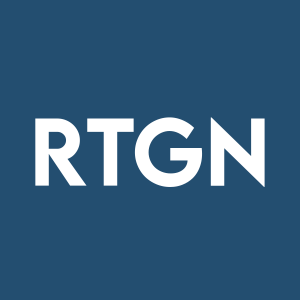RetinalGeniX™ Technologies Inc. Granted a Patent for System And Method For Visualization Of Ocular Anatomy
A New Patent Granted for an Affordable and Effective Device and Method To Detect Ocular And Systemic Diseases
PETALUMA, Calif., Feb. 22, 2024 (GLOBE NEWSWIRE) -- RetinalGeniX™ Technologies Inc. (OTCQB:RTGN) (“RetinalGeniX” or the “Company”) today announced that it has been granted a patent by the United States Patent and Trademark Office for the Company's System And Method For Visualization Of Ocular Anatomy.
The present invention relates to systems and methods for visualizing eye anatomy for diagnostic and therapeutic purposes. It is an objective of this invention to visualize naturally unfolded and misfolded proteins in eye tissues, as well as other biological material, and to detect their structures and molecular mechanisms underlying their involvement in diseases.
The invention can identify changes in the geography of the eye, including atrophy, emaciation, and swelling. Furthermore, it allows for the detection and analysis of various conditions of the eye, such as, hydration, innervations, inflammation, circulation, nerve conduction, etc. Each of these conditions is typically caused by one or more diseases, and being able to visualize and measure these conditions in the eye provides very useful information regarding the cause, extent, and diagnosis of various diseases of the body.
The Company believes that various conformational diseases of the body may be detected early on by finding trace elements of their existence by visualizing the anatomy of the eye. Some of the best-studied ocular conformational diseases include cataracts in the lens and retinitis pigmentosa in the retina.
Conformational diseases include more than 40 disorders, including Alzheimer's, Parkinson's, and Huntington's Disease, as well as Cystic Fibrosis and some forms of cancer, liver, heart, and kidney disease and are typically caused by the accumulation of unfolded or misfolded proteins.
As an example, Alzheimer's disease is characterized by an increase of tiny inclusions in the nerve tissue, called plaques. These plaques are found between the dying cells in the brain from the build-up of a protein called beta-amyloid. Beta-amyloid protein has been found to aggregate in the lens of the eye. Accordingly, the ability to detect and measure beta-amyloid aggregates in the eye creates an opportunity to detect and diagnose the onset of Alzheimer's disease.
While various newer optical imaging techniques provide improved imaging capabilities, the Company believes there is a need for an effective and affordable device and method that allows for a simplified but accurate imaging of a person's eye to detect symptoms of both ocular and systemic diseases.
Jerry Katzman, MD, Chairman, President and CEO of RetinalGeniX, said, "Timing in life is everything and there couldn’t have been a better time for this patent to be awarded. As per the RetinalGeniX platform, associating systemic disease with retinal imaging as well as ocular disease through potential biomarkers would be not only cost-effective and efficient but very practical to expand screening simply to the masses worldwide!"
Safe Harbor Statement
This press release contains certain forward-looking statements within the meaning of the safe harbor provisions of the Private Securities Litigation Reform Act of 1995. These statements are identified by the use of the words “could,” “believe,” “anticipate,” “intend,” “estimate,” “expect,” “may,” “continue,” “predict,” “potential,” “project” and similar expressions that are intended to identify forward-looking statements and include statements regarding the invention’s objective to visualize naturally unfolded and misfolded proteins in eye tissues, as well as other biological material, and to detect their structures and molecular mechanisms underlying their involvement in diseases, the invention allowing for the detection and analysis of various conditions of the eye, various conformational diseases of the body may be detected early on by finding trace elements of their existence by visualizing the anatomy of the eye, the ability to detect and measure beta-amyloid aggregates in the eye creating an opportunity to detect and diagnose the onset of Alzheimer’s disease, the need for an effective and affordable device and method that allows for a simplified but accurate imaging of a person’s eye to detect symptoms of both ocular and systemic diseases, and associating systemic disease with retinal imaging as well as ocular disease through potential biomarkers would be not only cost effective and efficient but very practical to expand screening simply to the masses worldwide. These forward-looking statements are based on management’s expectations and assumptions as of the date of this press release and are subject to a number of risks and uncertainties, many of which are difficult to predict, that could cause actual results to differ materially from current expectations and assumptions from those set forth or implied by any forward-looking statements. Important factors that could cause actual results to differ materially from current expectations include, among others, the invention’s ability to detect various conditions of the eye typically caused by one or more diseases, the invention’s ability to detect diseases early, the ability of the invention to provide cost-effective screening, the Company’s ability to protect its intellectual property, and the risk factors described in the Company’s Annual Report on Form 10-K for the year the risk factors described in the Company’s Annual Report on Form 10-K for the year ended December 31, 2022, and the Company’s subsequent filings with the SEC, including subsequent periodic reports on Forms 10-Q and 8-K. The information in this release is provided only as of the date of this release, and we undertake no obligation to update any forward-looking statements contained in this release on account of new information, future events, or otherwise, except as required by law.
Contact
RetinalGeniX Technologies Inc. Jerry Katzman, MD, CEO
jkatzman@retinalgenix.com
+1 (415) 578-9761
www.retinalgenix.com









